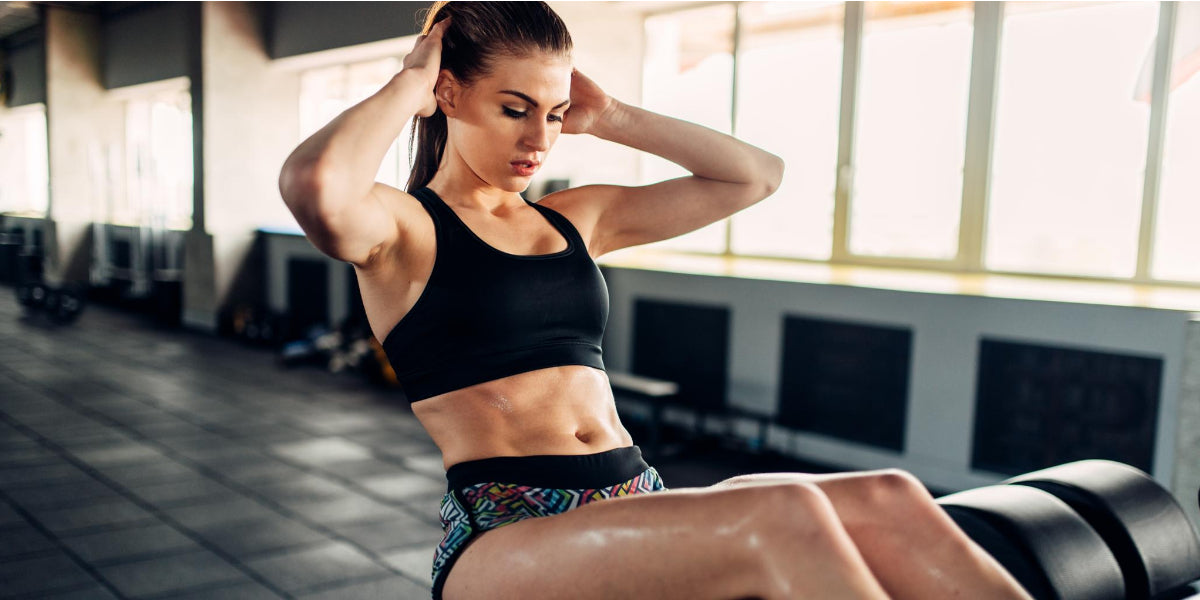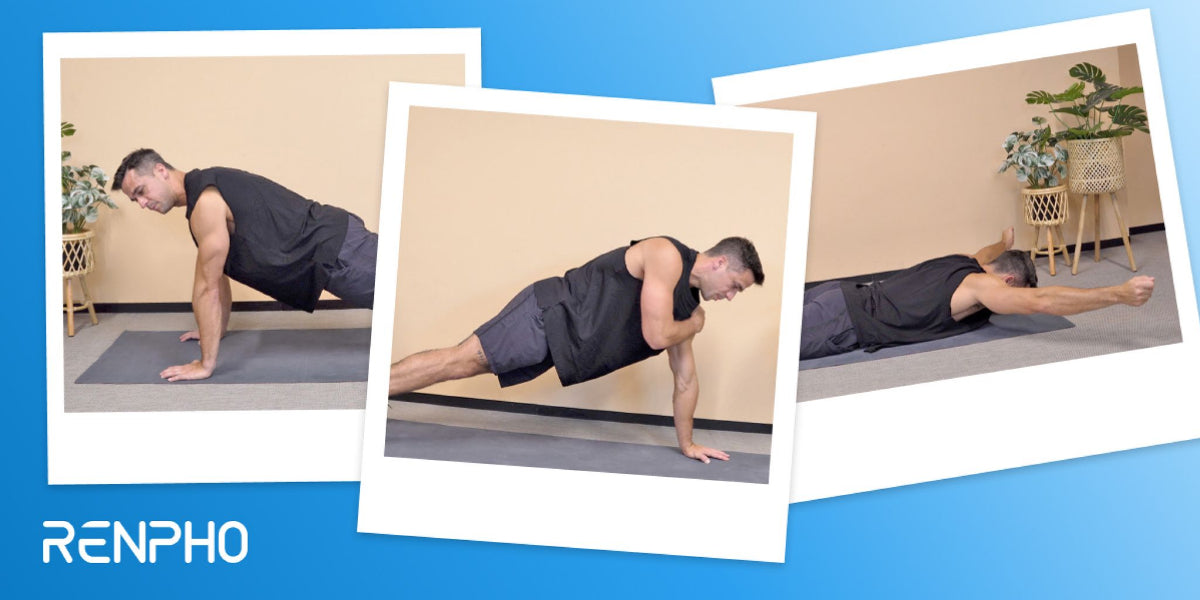Say yes to upper-body day if you’re one of the many gym-goers who want to have bulging biceps, a big chest, and broad shoulders!
You’ve probably heard or even tried several upper-body workouts and felt that they aren’t working for you. Worry no more! With the help of a Personal Trainer, David Hughes, we’ve listed upper-body workout ideas that are beginner-friendly, and most of all, effective!
Importance of Warming up with Massage Guns
Before we dive in, it is important to establish that pre-workout routines are as important as the actual exercise. Pre-workout routines usually include stretching like light yoga, eating protein food, and drinking water. However, we’d like to offer a great addition to your routine– a massage gun.
Massage guns provide multiple benefits to level up your personal fitness goals. They help increase blood flow in your muscles, loosen knots in muscle tissue, and enhance joint motion to warm up your muscles for exercise.
For starters, your IT band, or iliotibial band– a long fibrous band of fascia tissue found from the hip to the outside of the knee that helps with leg mobility and stability– is essential to maximize your exercise routine.
Doing exercises that require resistance and heavier weight can cause IT Band Syndrome and damage to the muscles around it. When your IT band is injured, you may experience instant pain during or after physical activity. Unfortunately, this can affect your muscle growth and progress by limiting the range of motion you can do.
To help prevent this, Alex Stone, a Doctor of Physical Therapy and Certified Strength and Conditioning Specialist (NSCA,) recommends the use of a massage gun.
Bonus massage tips:
Here are some ways how to safely and effectively use massage guns to boost your workout game from Coach David:
• First, you might want to set your massage gun to a setting that is most comfortable for you. The goal here is to feel relaxed and not feel any pain. Assess yourself!
• Do a circular motion to efficiently target any knots in your muscle.
• If you’re doing upper-body workouts like push-ups, focusing on your deltoids or delts is your priority.
• Keep massaging in a circular motion for 30-45 seconds, then pause for 15-20 seconds. Reverse the movement and continue massaging for another 30-45 seconds to complete one set. Repeat to the other side.
Essentially, massage guns aid in improving overall workout performance and preventing the risk of injury by relieving muscle tension and improving circulation. So, consider using a massage gun before partaking in the upper-body strength workout below.
Beginner-Friendly Upper-Body Exercises
Push-up

Steps
1. Start on all fours with your palms flat on the ground slightly wider than shoulder-width apart.
2. Straighten your arms and legs.
3. Start bending your elbows and lower your chest for 3 seconds until it nearly touches the ground.
4. Pause, then push yourself back to the starting position.
5. Repeat.
Benefits
• Push-ups are great for working both your pec muscles, the pectoralis major, and pectoralis minor.
• This exercise also engages and tones your triceps, chest muscles, and shoulder muscles.
• Most of all, this helps in enhancing upper-body stability, making daily chores easier like lifting heavy items.
Tips
• Keep your lower back flat and parallel to the ground to avoid sagging your hips.
• If keeping a high plank is difficult for you, try placing your knees on the ground.
• Keep your core tight, and pelvis tucked while doing the exercise.
• Try to take the pressure off your wrists, instead place the weight on the outside of your hands.
• For beginners, aim for 2 sets of 10-15 repetitions.
Shoulder taps

Steps
1. Start in a high plank position, placing your palms under your shoulder and keeping your feet hip-width apart.
2. Tap your left shoulder with your right hand and return to the high plank position.
3. Tap your right shoulder with your left hand and repeat to the opposite side alternately.
Benefits
• Shoulder taps primarily target the core and arms, giving you toned upper-body muscles.
• This also works the glutes, wrists, and shoulders.
• This exercise helps reduce lower back pain.
• Fixes postural issues and flexibility.
Tips
• Keep your core and glutes engaged throughout the exercise.
• Keep a controlled pace when tapping your shoulders
• Maintain a straight spine, head, and neck.
• Keep the movement slow and precise to avoid muscle strain.
• Perform 2 sets of 10-15 repetitions.
Lying IYT raises

Steps
1. Lie facedown on the ground. Keep a straight body.
2. Assume an “I” position by raising your arms overhead and pointing your thumbs toward the ceiling.
3. Bring down your arms slowly until your body forms a “Y” position.
4. Continue lowering your arms until your body forms a “T” position.
5. Repeat.
Benefits
• This exercise engages the shoulder and back muscles to give you upper-body strength.
• It increases shoulder strength and prevents rotator cuff issues.
• It offers upper-body mobility and improved posture.
Tips
• Hold each position for 3-5 seconds.
• Try to focus on lifting your arms through your shoulders.
• You can do this exercise in bed when you wake up or don’t feel like working out.
• Perform 10-15 repetitions.
Conclusion
Try not to perform every exercise there is, instead stick to the basics and modify as you get comfortable. Doing the upper-body exercises above is not only helpful for gaining muscle mass and strength but also beneficial for improving balance and posture.
Renpho Health Tips
-

What Does It Really Mean to Engage Your Core?
October 19, 2022
Read more >
-

How to Eat Smarter for Muscle Building
November 3, 2022
Read more >
-

Chin-Up Vs Pull-Up: What's The Difference?
November 28, 2022
Read more >
-

Tips to Stay Fit Over Christmas
December 5, 2022
Read more >
-

Exercises You Can Do for Stronger Arms & Abs This New Year
January 3, 2023
Read more >

